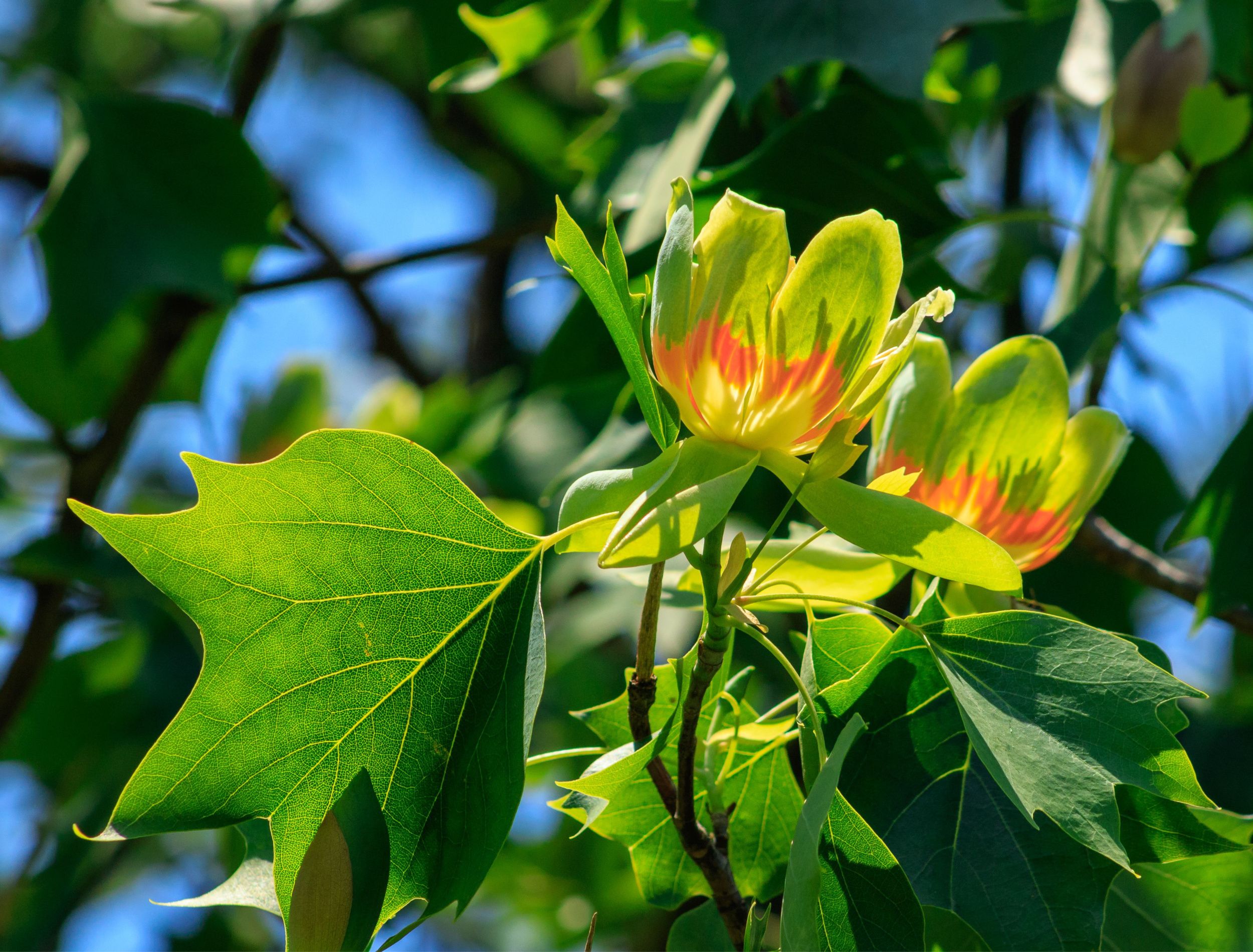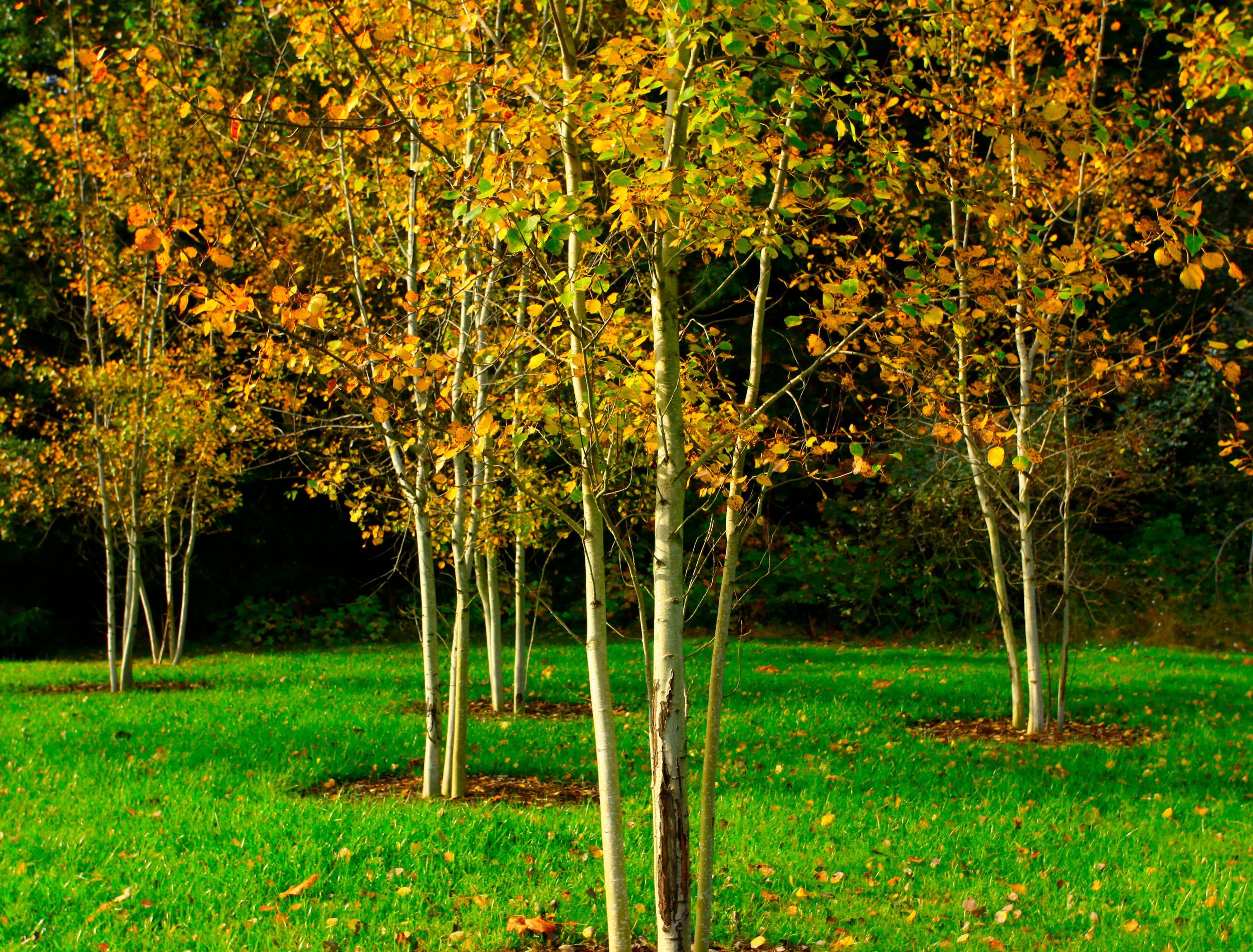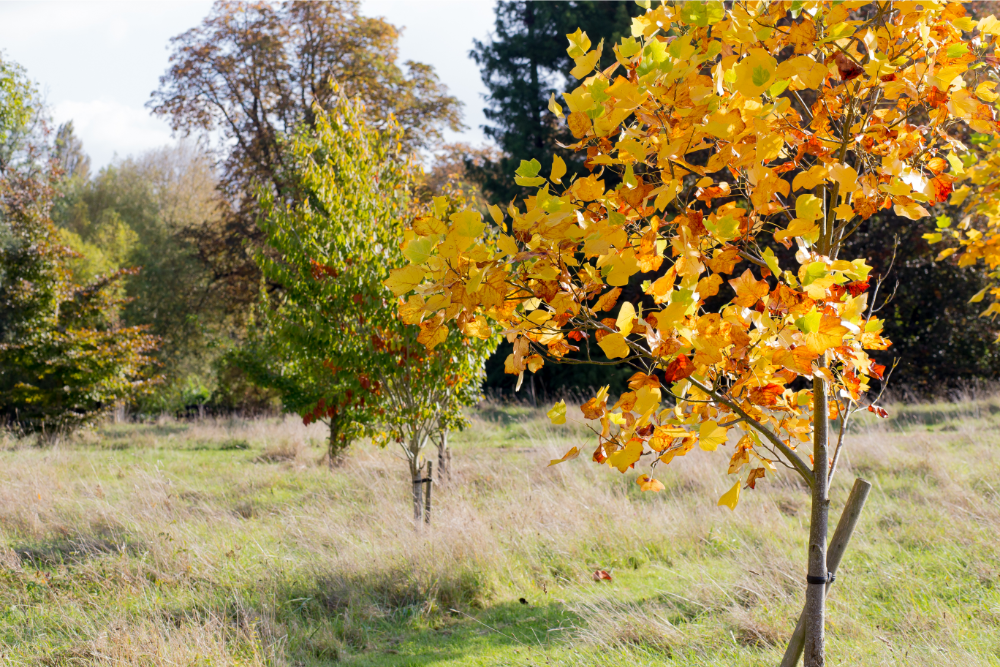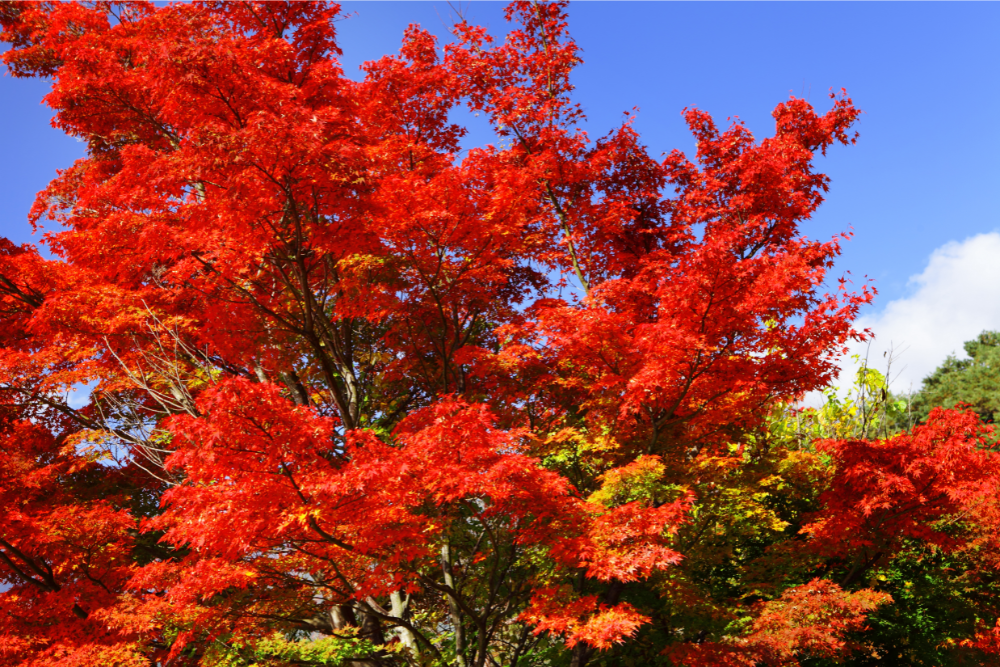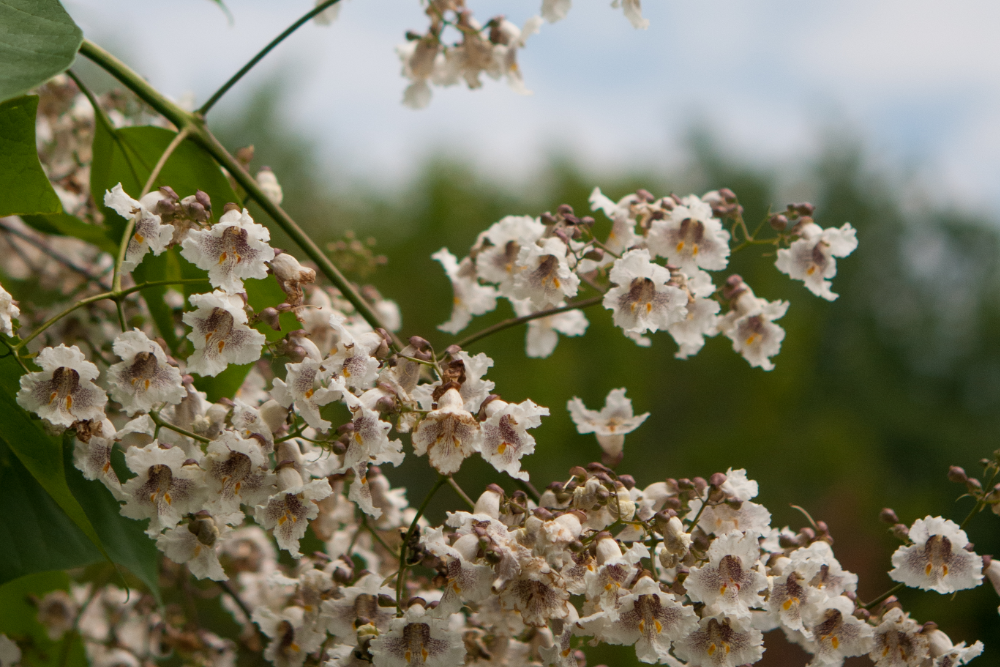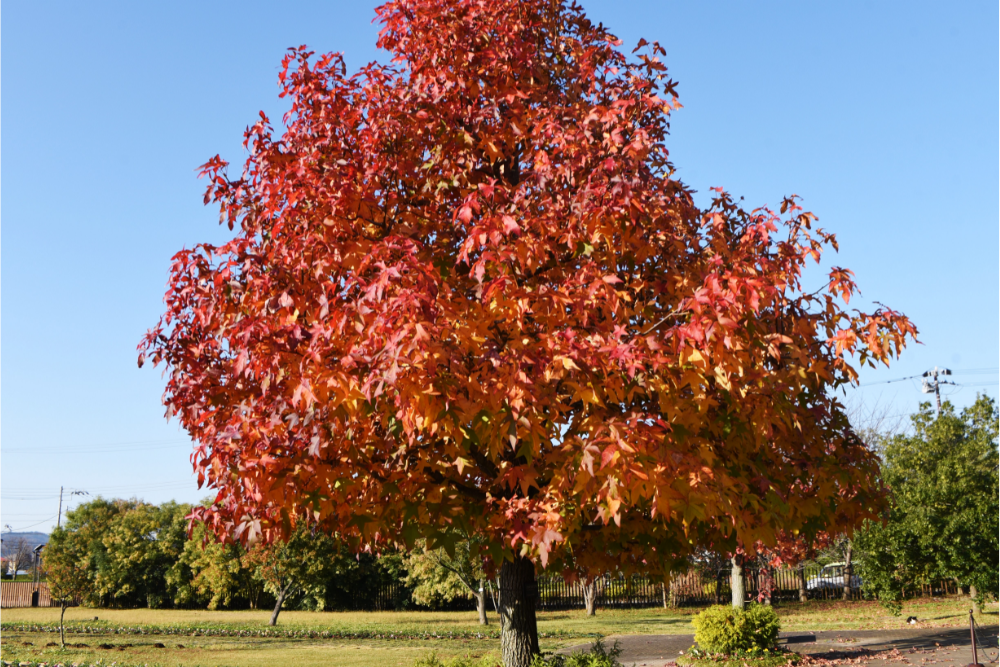Time is of the essence! You can enhance the aura of your backyard by giving it love and shade of fast-growing trees. Shade trees give relief from the scorching heat of the sun. Yet they look magnificent when it rains.
It feels like having a little forest right in your backyard and a place where you can enjoy that delicious coffee right in its shade.
Learn about the leafy, fast-growing giants you can consider having in your backyard.
1. Quacking Aspen
The quacking aspen tree brings life and a gentle melody to the backyard with its leaves that quake in the wind.
Quacking aspens commonly thrive in dense clusters, forming a breathtaking golden panorama as their leaves transition during autumn. The long trunk of this tree is decked out with smooth, cream-colored bark, giving off a greenish-white vibe.
Growth Requirements
The quaking aspen grows in a variety of soil types, including acidic, loamy, moist, sandy, well-draining, and clay soils. It particularly flourishes in environments with ample moisture. The quaking aspen flourishes in hardiness zones 1 to 7 and grows at a remarkable rate of 24 inches per year.
At maturity, the quaking aspen reaches an impressive height of 40 to 50 feet, with a graceful spread of 20 to 30 feet. Aspen thrives in areas with full sun and partial shade. It needs at least four hours of direct, unfiltered sunlight daily.
Quacking aspens require regular watering to thrive. To ensure the hydration and health of your quaking aspens, water them thoroughly to a depth of 2 feet every two to four weeks. During scorching summers, provide water to the trees at least every other week. In winter, if there is no snow covering the ground, water the trees at least once a month.
Quacking tree is a versatile resource used to create a wide range of products, including toys, tongue depressors, popsicle sticks, clothespins, crates, and paper pulp.
2. Tulip Poplar
The tulip poplar is highly regarded as a beautiful ornamental tree providing refreshing shade. Its beauty and functionality make it a cherished addition to your backyard.
You can plant it in the backyard. It is a rapidly growing tree with an impressive yearly height increase exceeding 24 inches. It has vibrant green leaves that resemble tulip flowers transforming a golden yellow hue during autumn.
Growth Requirements
The tree has aromatic stems. It thrives in soil that is neither excessively dry nor saturated. It flourishes in loamy, acidic, well-draining, moist soils and clay soils. The majestic tulip tree thrives across various hardiness zones 4 to 9.
This tree reaches a height ranging from 70 to 90 feet, with a mature crown that spreads up to 40 feet. It requires full sun, translating to a minimum of six hours of direct, unfiltered sunlight daily. Ensuring it receives ample sunlight is crucial to its growth and overall well-being.
It is important to provide regular watering to young trees that have undergone root pruning for a minimum of three years after transplantation. For two weeks after planting, water your tulip tree daily. To ensure proper hydration, provide approximately 2 gallons of water for every inch of trunk diameter.
3. Red Maple
The red maple, a magnificent and versatile tree, is abundant in the forests of eastern North America. With a subtle reddish hue, its flowers, twigs, and seeds enchant the eyes.
Maple trees display leaves with palmately lobed shapes resembling a hand. Differentiating between red and sugar maples can be tricky; red leaves possess toothed edges, whereas sugar maple leaves feature smoother edges.
Growth Requirements
Red maple thrives in acidic soil and requires moist, well-draining conditions for optimal growth. The growth rate of this tree ranges from medium to fast, with annual height increases between 13 and 24 inches.
The red maple tree thrives in various hardiness zones, 3 to 9. The red maple tree can reach heights of 40 to 60 feet with a spread of 35 to 45 feet.
The maple tree thrives in full sun, requiring at least six hours of direct sunlight daily. However, it can also tolerate partial sun or shade, making it adaptable to environments with four to six hours of light daily.
Ensure thorough watering during planting and twice-weekly as required for the initial few months. For young maple trees, approximately 11 gallons of water per week are necessary.
4. Northern Catalpa
Northern catalpa is a great tree for your backyard, but this lovely green friend needs your extra love and care. With its broad, heart-shaped foliage and clusters of abundantly fragrant white showy flowers, this tree elevates the beauty of your backyard.
Growth Requirements
Northern Catalpa thrives in alkaline soil that is moist and well-draining. The northrn catalpa tree does well in hardiness zones 4 to 8.
At maturity, the northern catalpa reaches a majestic height of 40 to 60 feet with a spread of 20 to 40 feet. It stands tall, emanating a captivating aura that demands attention.
Northern catalpa thrives in areas with full sun and partial shade and needs six hours of direct, sunlight daily.
After planting, make sure to water the plant thoroughly and closely monitor its progress in the following week. During the summer, provide it with a generous soaking once a week, unless there is abundant rainfall exceeding 1 inch per week.
The appropriate amount of water for a young tree depends upon the soil type. Clay soils necessitate less frequent watering, whereas sandy soils require more frequent irrigation. Soils that are mulched can sustain longer periods without the need for irrigation.
Determining the precise timing and quantity of water for irrigation can be challenging, as multiple factors come into play. During the initial year, it is important to provide newly planted trees with deep and regular watering, preferably once a week. Placing a slow drip line at the base of the tree for approximately an hour is more than enough to meet this requirement.
5. American Sweetgum
American sweetgum is a wonderful tree for your backyard. The star-shaped leaves of this plant exhibit five lobes, sometimes even seven, which boast a lustrous medium-green hue.The foliage offers a stunning display of autumn hues, as the leaves transform into vibrant shades of yellow, orange, red, and purple.
Growth Requirements
This beauty thrives in hardiness zones 5 to 9 and offers ideal shade to backyards and gardens.
American sweetgum exhibits a moderate to rapid growth rate, with annual height increases ranging from 13 to 24 inches. It thrives in a variety of soil types, including acidic, loamy, moist, sandy, well-draining, wet, and clay soils. Note that it possesses a moderate level of drought tolerance.
At maturity, the American sweetgum reaches an impressive height of 60 to 75 feet. It extends up to 40 to 50 feet, gracefully reaching out in all directions. For this tree to thrive, it needs full sun, requiring a minimum of six hours of direct and unfiltered sunlight every day.
During the sweet gum tree's first season, water it daily to every three days based on the climate and precipitation.
After firmly rooting itself, the majestic sweetgum tree quenches its thirst by drawing moisture from the soil. This eliminates the need for any additional watering.
Shade trees Can Solve Your Hot Summer Woes
Imagine enjoying your favorite beverage under the cool canopy of these leafy giants right in your own backyard. Whatever tree you choose to plant, make sure you pick up the right spot.
When planting a shade tree, be sure to consider its mature height and width. You don't want a towering tree casting too much shade or narrowing pathways in your garden.
Which shade tree are you willing to plant? Share in the comments!

